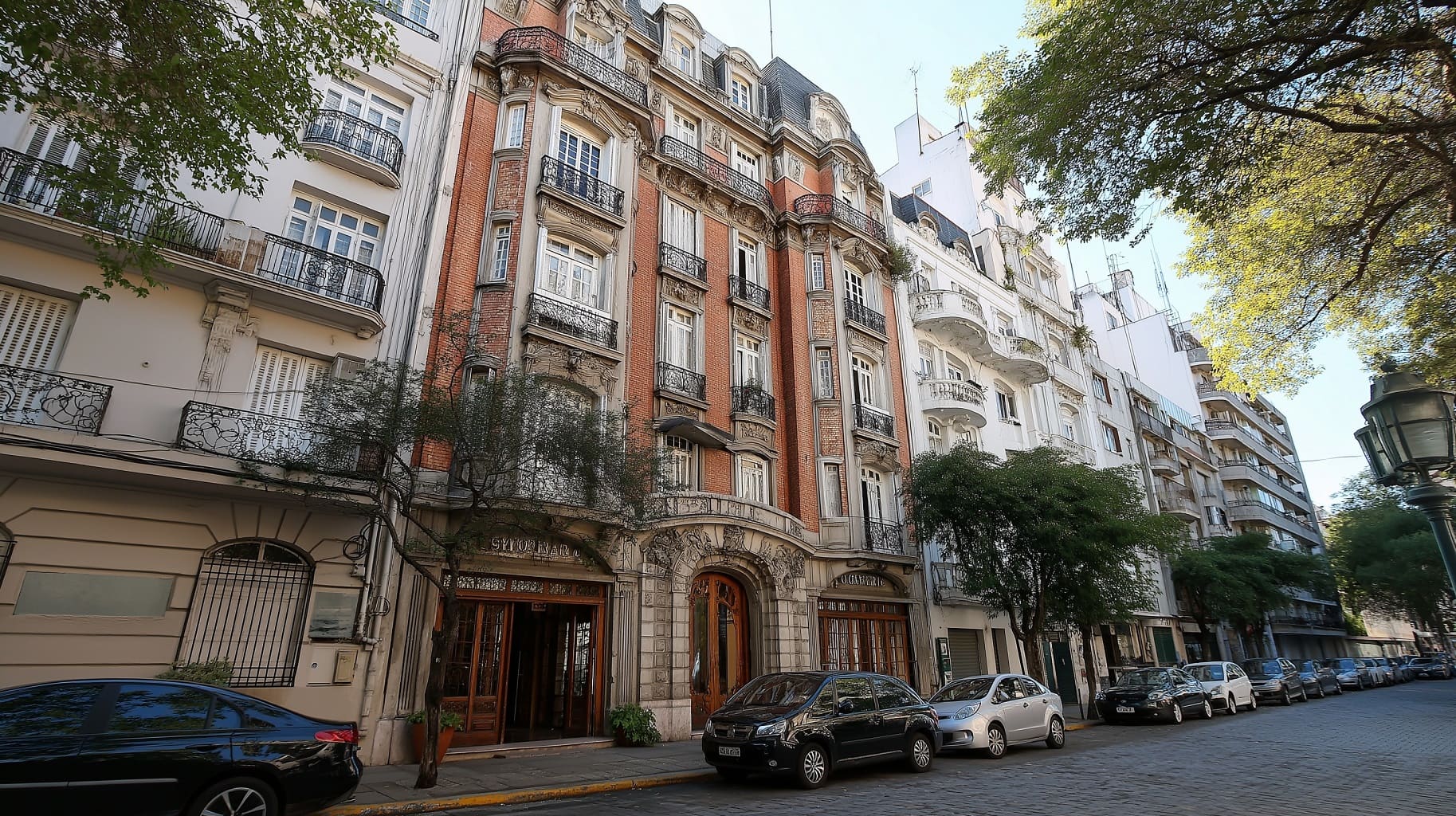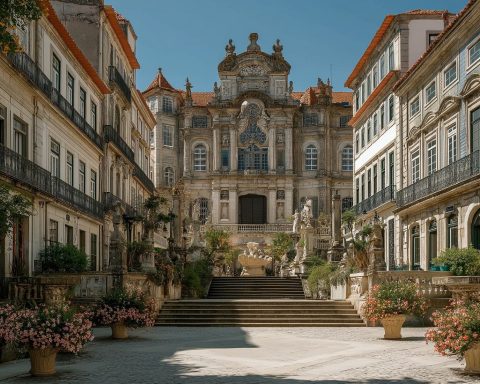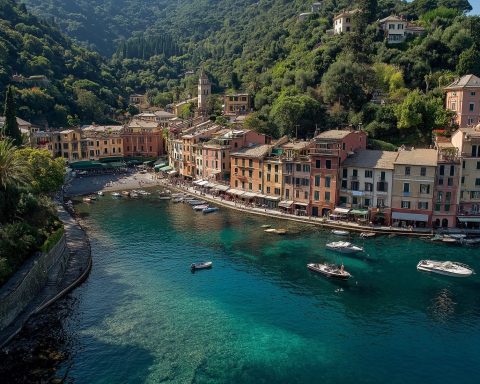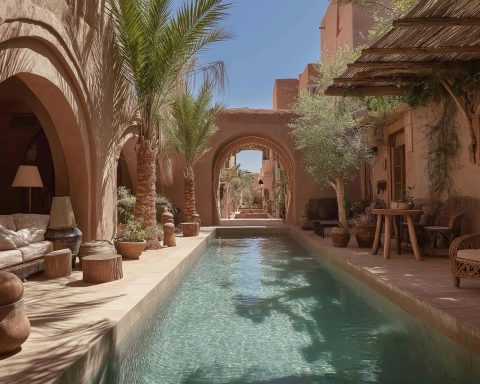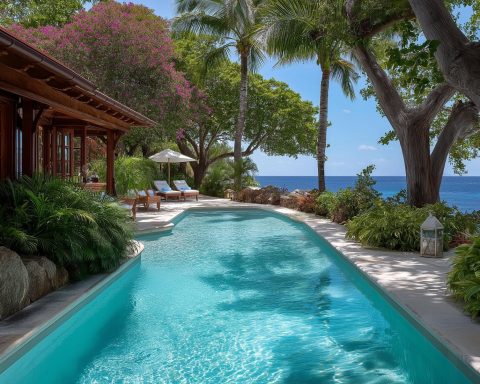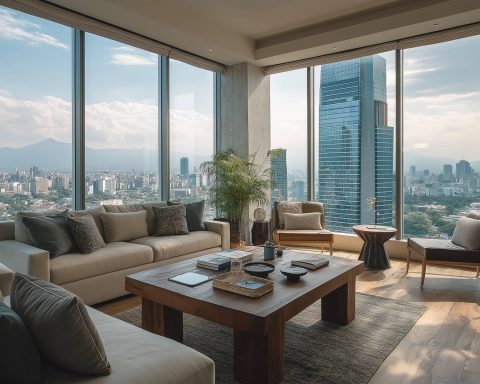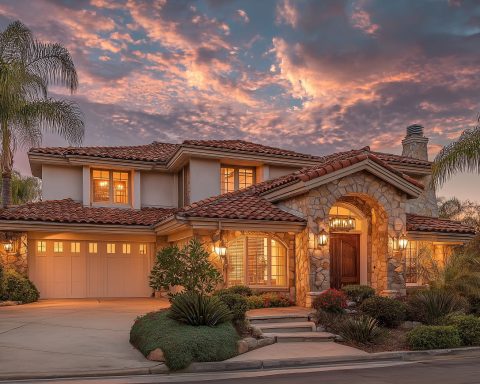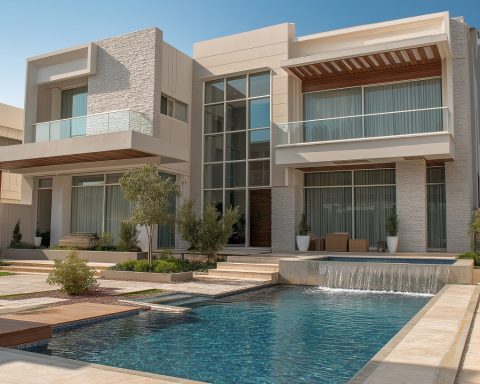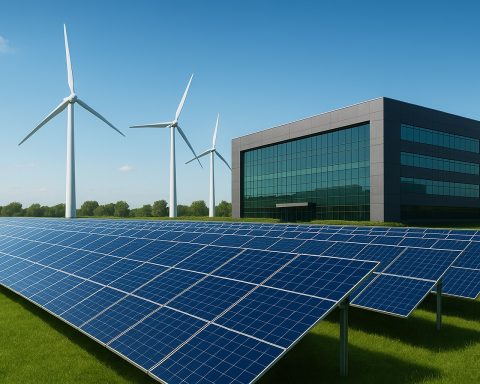The Buenos Aires real estate market in 2025 is experiencing a strong rebound after several challenging years. Driven by sweeping economic reforms, eased currency controls, and returning investor confidence, property transactions have surged and prices are climbing again thelatinvestor.com thelatinvestor.com. Nominal apartment prices have risen about 8.5% over the past year on average, with upscale neighborhoods seeing particularly robust gains thelatinvestor.com. This revival comes despite Argentina’s high inflation environment – real (inflation-adjusted) property values remain below their peaks – as both local and foreign buyers re-enter the market in force thelatinvestor.com globalpropertyguide.com. In the sections below, we provide a comprehensive analysis of residential, commercial, and mixed-use real estate trends across Buenos Aires, including neighborhood-level dynamics, pricing compared to previous years, investment patterns, regulatory changes, macroeconomic context, and major developments influencing property values.
Residential Real Estate Market Trends
Sales Volume and Demand: Residential sales activity in Buenos Aires has accelerated sharply. The number of property deeds signed jumped by 35% in 2024 compared to the prior year bowtiedmara.io, marking the strongest market momentum since 2018. This surge continued into 2025 – Q1 2025 alone saw transaction volumes about 40% higher year-on-year thelatinvestor.com thelatinvestor.com. A pivotal catalyst was the lifting of currency controls in April 2025, which unlocked pent-up demand; within weeks of this reform, real estate transactions spiked by 35% as buyers rushed in thelatinvestor.com thelatinvestor.com. Buyer confidence has also been bolstered by government measures to expand mortgage credit after years of scarce home financing. For the first time in over a decade, local banks resumed offering mortgages in mid-2024, resulting in about 9% of home purchases being financed in 2024, up from just 4% a year prior bowtiedmara.io. While mortgages are still only used in under 10% of sales, this nascent credit growth is expected to “help drive the market going forward”, as experts note that new access to leverage often sparks broader housing demand thewanderinginvestor.com thewanderinginvestor.com.
Price Trends: After a prolonged downturn, Buenos Aires home prices have entered a recovery phase. The average apartment price in the city hit USD $2,339 per square meter in early 2025, roughly on par with 2022 levels and about 7% higher than a year before bowtiedmara.io. This marks a notable turnaround from 2018–2022, when USD-denominated property values slumped. During the worst of the slump (2019–2020), prices fell by double digits annually in real terms globalpropertyguide.com. Even in nominal terms, average prices were declining by 3–5% per year through 2022 globalpropertyguide.com. The bottom appears to have been mid-2023; from June 2023 to January 2025, the city’s average price per m² has risen about 8.7% bowtiedmara.io. However, because Argentina suffered hyperinflation of 133% in 2023 and continued high inflation into 2024 globalpropertyguide.com idealista.com, real (inflation-adjusted) property values are still significantly below peak. In fact, one analysis showed that despite a ~5.5% nominal USD price uptick in Q2 2024, inflation-adjusted apartment prices plunged ~72% year-on-year that quarter globalpropertyguide.com globalpropertyguide.com. The orange line in the chart below illustrates how far prices fell since the 2018 peak and the modest recovery underway now:
Looking ahead, local analysts forecast continued nominal price growth in 2025–2026. Premium districts are projected to see +8–12% annual appreciation, while emerging areas could achieve 10–15% gains thelatinvestor.com thelatinvestor.com. These forecasts assume inflation moderates (from ~120% in 2024 to ~60% in 2025) and that recent pro-market reforms sustain buyer optimism thelatinvestor.com thelatinvestor.com. It’s worth noting that even a 10% annual price rise in USD terms would likely lag behind local inflation, but if Argentine inflation indeed decelerates as hoped, real property values may finally stabilize or increase after years of erosion.
Neighborhood Price Variations: Residential property values in Buenos Aires vary dramatically by neighborhood. The table below highlights average price levels in select areas as of mid-2025:
| Neighborhood | Average Price (USD per m²) | Market Segment |
|---|---|---|
| Puerto Madero | $5,900 – $6,000 globalpropertyguide.com | Ultra-luxury high-rises |
| Palermo (Soho & Hollywood) | $3,500 – $4,300 thelatinvestor.com thelatinvestor.com | Trendy apartments, new builds |
| Recoleta | $3,800 – $4,200 thelatinvestor.com | Upscale historic/luxury |
| Belgrano | ~$2,900 – $3,000 thelatinvestor.com | Middle/upper-class residential |
| Caballito | ~$2,250 – $2,300 thelatinvestor.com | Middle-class residential |
| San Telmo | $2,100 – $2,800 thelatinvestor.com | Old town (renovated units) |
| Villa Crespo | ~$2,200 – $2,600 (est.) | Gentrifying area |
| Villa Lugano | $1,500 – $1,800 thelatinvestor.com | Affordable outskirts |
| Citywide Average (CABA) | $2,300 – $2,400 bowtiedmara.io | – |
Premium northern districts and the central waterfront command top prices. Puerto Madero, a modern luxury enclave of towers and amenities, is the costliest area at around $6,000/m² globalpropertyguide.com – roughly 3× the city’s average. Palermo Soho and Hollywood (trendy Palermo sub-districts popular with expats and young professionals) average $3,500–$4,300/m² thelatinvestor.com, reflecting strong demand for their nightlife, dining, and co-working scene. Traditional high-end neighborhoods like Recoleta (known for its French-style architecture and embassies) also fetch upwards of $4,000/m² thelatinvestor.com. By contrast, middle-class residential zones like Belgrano and Caballito see prices in the $2,200–$3,000 range thelatinvestor.com. Working-class outer neighborhoods in the south and west, such as Villa Lugano or parts of Mataderos, offer the cheapest properties at ~$1,500/m² thelatinvestor.com. These value differences tie closely to local incomes, amenities, and perceptions of safety and infrastructure.
Neighborhood Winners and Losers: In 2024–2025, gentrifying and prime areas are leading price growth, while a few outlying districts lag. The hottest neighborhood is Villa Crespo, a once-gritty area adjoining Palermo that’s rapidly gentrifying – it’s seeing 10–15% annual price appreciation amid new developments and improved transit links thelatinvestor.com. Close behind are Palermo Soho/Hollywood, both logging roughly 8–12% yearly gains as foreign buyer interest and limited inventory push values higher thelatinvestor.com. Recoleta and Palermo Chico (another upscale zone) maintain a steady 8–10% growth thanks to resilient luxury demand thelatinvestor.com. Emerging middle-class areas like Villa Urquiza (northwest) also show strong momentum, with current prices ~$2,600–$3,300/m² and projected growth of 10–15% as new infrastructure comes online thelatinvestor.com.
On the other hand, a few segments are stagnating. The far-southern neighborhoods (Sur) with poorer connectivity and high poverty are barely appreciating – Villa Lugano and adjacent districts are seeing only 2–4% annual price growth thelatinvestor.com, trailing far below inflation. These areas, while offering affordable housing for locals, lack the investment interest driving up other parts of the city. Even in the rental market, demand is weaker there. The map below illustrates these regional disparities: darker colors in the north and central city correlate with higher prices and faster growth, whereas the pale areas in the south have the lowest values and minimal appreciation.
Buyer Profiles – Foreign vs. Domestic: Notably, foreign investors have returned to Buenos Aires real estate in growing numbers. With the peso’s devaluation making Argentine properties unusually cheap in dollar terms, buyers from the U.S., Spain, and other countries are “flocking” to the market thelatinvestor.com. By mid-2025, international purchasers account for an estimated 8–12% of all sales in premium neighborhoods like Palermo, Recoleta, and Puerto Madero thelatinvestor.com thelatinvestor.com. Many are attracted by favorable exchange rates and the potential for significant capital gains as the market recovers thelatinvestor.com. In addition, Argentina has made it easier for foreigners to invest: currency restrictions were lifted (no longer trapping investors’ dollars) trade.gov, and obtaining residency is straightforward with even modest investments (one can qualify for a visa by investing roughly ARS 1.5 million, about USD $1,500, given the weak peso) thelatinvestor.com. Foreigners face no legal barriers to buying urban real estate, and sellers are increasingly willing to accept USD offers, which further encourages overseas buyers thelatinvestor.com. Popular targets for international investors include luxury condos in Puerto Madero and renovated historic flats in San Telmo, which offer both appreciation potential and attractive rental income from expats/tourists thelatinvestor.com thelatinvestor.com.
Domestic buyers, meanwhile, are also driving the rebound. Argentina’s growing middle class (despite economic volatility) has a cultural preference for real estate as a store of value, often choosing property over unstable bank deposits. With inflation finally showing signs of slowing and mortgage credit starting to expand, more locals are trying to purchase homes thelatinvestor.com thelatinvestor.com. The government’s pro-homeownership policies – such as boosting access to credit and implementing a tax amnesty – have further stimulated local demand. Under a 2024 “Blanqueo” program, Argentines with undeclared savings could legitimize up to $100,000 tax-free (and larger amounts at a low tax rate) if invested, and much of this capital is expected to flow into real estate thewanderinginvestor.com thewanderinginvestor.com. Additionally, as detailed in the Legal & Regulatory section, Buenos Aires City has eliminated stamp duty for most first-time homebuyers under ~$190,000 expatsba.com expatsba.com, reducing transaction costs for local families. These factors have empowered more Argentine buyers – particularly young professionals and first-home seekers – to enter the market alongside foreign investors.
Rental Market Trends
The Buenos Aires rental housing market has undergone a dramatic shift since late 2023. In a bid to correct a severe rental shortage, the new government repealed Argentina’s strict rent control law in December 2023, which had previously imposed fixed three-year lease terms and caps on rent increases idealista.com. The immediate impact was a flood of supply: within 8–9 months of the repeal, the number of apartments available for rent in the city jumped by roughly 170% idealista.com. By late 2024 there were over 19,000 rental listings in Buenos Aires, more than 3.2× the inventory of early 2023 idealista.com. This boom in supply – essentially owners bringing units back to the long-term rental market after regulations were lifted – has finally eased the pressure on renters. While asking rents are still rising in nominal terms, the pace slowed markedly. Through August 2024, rents in BA increased about 45% year-on-year, which sounds high but was less than half of the general inflation rate (~94%) over the same period idealista.com. In real terms, that represents roughly a 49% drop in rent costs for tenants after years of surging prices idealista.com idealista.com. Indeed, by mid-2024 the monthly rent hikes were the lowest since 2021, a direct result of the expanded supply and market-friendly policies idealista.com. Landlords, freed from prior constraints, are more willing to offer units for long-term lease again, and many have moderated rent expectations in order to attract tenants in a now more competitive market.
Rental Yields: For property investors, rental yields in Buenos Aires average around 6–8% gross in USD terms for residential units – fairly moderate returns given Argentina’s risk profile. Citywide, studio apartments offer the highest yields (about 8.3% on average) since they are cheaper and in demand by young renters thelatinvestor.com thelatinvestor.com. Larger units (2-3 bedrooms) typically yield around 6–7% in prime areas thelatinvestor.com. For example, studios in central neighborhoods can net ~7–8%, whereas one-bedroom and two-bedroom units tend to yield ~5–7% depending on location thelatinvestor.com. Palermo Soho, despite high property values, sees studio yields around 7.5%, declining to ~6.0% for three-bedrooms thelatinvestor.com. Middle-class areas like Caballito show steadier yields ~6% across unit sizes thelatinvestor.com. Interestingly, in Puerto Madero – normally low-yield due to pricey units – larger luxury apartments can achieve ~7.9% yields (higher than its smaller units) because affluent expatriate families and executives are willing to pay premium rents for top-end homes thelatinvestor.com. Overall, rental yields in BA are considered low by regional standards (e.g. higher-risk markets in LATAM often yield >8-10%). Investors thus generally view Buenos Aires more as a capital appreciation play than a cash-flow play thewanderinginvestor.com thewanderinginvestor.com. The recent surge in rental supply and flattening of rent prices may keep yields in check near-term. However, with property prices still relatively depressed (historically speaking) and tourism picking up, there is upside for rental income especially via the short-term rental segment (Airbnb) targeting foreigners.
Short-Term Rentals: The tourist and Airbnb market in Buenos Aires is robust, as the city has become a hotspot for digital nomads and regional travelers. Neighborhoods like Palermo, Recoleta, and San Telmo are in especially high demand for short stays, which has buoyed rents for well-furnished apartments. According to local sources, a typical one-bedroom in Palermo can fetch around $500+ per month on medium-term rental to expats or nomads thewanderinginvestor.com. That said, the city government has begun considering regulations on short-term rentals amid complaints about their impact on housing supply. In early 2025, the Buenos Aires mayor proposed new rules for Airbnbs (as referenced by market observers bowtiedmara.io), though details and enforcement remain in flux. For now, occupancy rates for short-term rentals are moderate (~50% occupancy was noted for some rentals thewanderinginvestor.com), so operators must manage vacancies. Still, many landlords prefer the flexibility of dollar-denominated nightly rentals given Argentina’s volatile peso. Going forward, the balance between traditional leases and short-term rental use will depend on policy moves and tourism trends.
Commercial Real Estate Market
While residential real estate dominates headlines, Buenos Aires’ commercial property sectors – offices, retail, and industrial – are also navigating a post-pandemic recovery in 2025.
Office Market: The Buenos Aires Class A office market is showing tentative signs of recovery after a challenging few years. In Q1 2025, net absorption of top-grade office space was +28,685 m², indicating that companies are beginning to expand footprints again cushmanwakefield.com. Demand has been particularly driven by large firms leasing space in the Panamericana corridor (northern suburbs along the highway) and in Puerto Madero, where several new office buildings have come online cushmanwakefield.com. However, the influx of new supply has pushed the office vacancy rate up to ~16.9% (from ~15.9% at end of 2024) cushmanwakefield.com. Landlords are actively seeking tenants for newly delivered buildings, especially in non-central areas, which explains the rising vacancies. Office rents in Buenos Aires have remained stable around USD $23–$24 per m² per month for premium spaces cushmanwakefield.com. At ~$24/m², this is roughly on par with pre-pandemic rent levels, suggesting landlords have held asking rents steady despite high vacancy, likely due to most leases being dollarized. Many companies are taking advantage of tenant-favorable conditions to relocate to newer or better-located offices at similar costs. Overall, the office sector’s outlook is cautiously optimistic: economic reforms and an IMF-backed stabilization have improved business confidence, but vacancy may stay elevated until excess supply (including the recent Catalinas Norte II towers and other developments) is absorbed. Still, gradual positive absorption and stable rents signal that a bottom may have been reached in the office market cushmanwakefield.com.
Retail and Hospitality: Buenos Aires’ retail real estate – from shopping malls to high street storefronts – has been rebounding as well, aided by revived consumer spending (fueled in part by tourists and visitors taking advantage of Argentina’s currency arbitrage). Major shopping center operators like IRSA have reported improved metrics: in 2024 IRSA’s rental revenues (mostly from malls) were up ~8.8% and foot traffic recovered significantly gatewaytosouthamerica-newsblog.com. Prime retail corridors in the city (Florida Street, Santa Fe Avenue, Palermo Soho’s boutique zone) are seeing low vacancy and rising rents as retailers return. Additionally, Las Cañitas and other niche commercial areas are doing well – an Infobae analysis in early 2025 highlighted that sectors like gastronomy and nightlife lead the market in Las Cañitas, pushing up both rental and purchase prices for commercial premises there expatsba.com expatsba.com. Small businesses are expanding cautiously, and international brands are re-entering the market now that currency controls are lifted (allowing easier profit repatriation for foreign retailers). For retail landlords, rent indexation remains tricky: many leases still informally adjust in USD or via inflation-linked clauses, given annual inflation was ~95% in 2024 idealista.com. The hospitality sector has brightened markedly as well – boutique hotels and apart-hotels in areas like Recoleta and Palermo are benefitting from the post-pandemic tourism boom and Argentina’s new visa schemes for remote workers. Some investors have even converted residential buildings into co-living or hospitality uses to capitalize on high dollar-paying occupancy. Overall, the commercial retail/hospitality segment is in growth mode in 2025, though subject to macroeconomic swings in consumer spending power.
Industrial/Logistics: The industrial real estate market (warehouses, logistics parks) around Greater Buenos Aires had a mixed start to 2025. Q1 2025 saw -27,752 m² of net absorption (negative), as some occupiers downsized amid a dip in consumer spending cushmanwakefield.com. The vacancy rate for logistics space ticked up slightly to about 4.7% – still relatively low – and asking rents eased to roughly USD $7.20 per m² per month cushmanwakefield.com. No new warehouses were delivered in early 2025, but the construction pipeline is at its largest in five years as developers anticipate rising demand cushmanwakefield.com. Key industrial submarkets are along the Panamericana highway (north) and the west/south access routes. The Milei administration’s business-friendly stance and the peso devaluation (which makes Argentine exports more competitive) could stimulate more demand for logistics facilities in coming years. In fact, Fitch Ratings projects gradual improvement in Latin American occupancy rates and rents continuing beyond 2025 for industrial real estate, though possibly at a moderated pace due to lingering economic uncertainties financecolombia.com. If Argentina’s economy stabilizes and grows, expect the warehouse/logistics sector to expand – already some foreign industrial investors have shown interest, and local developers are readying projects anticipating a resurgence in manufacturing and e-commerce activity.
Mixed-Use Developments and Major Projects
Buenos Aires is witnessing a wave of mixed-use developments and infrastructure projects that promise to reshape parts of the city over the coming years. The largest by far is the “Costa Urbana” mega-project, a brand-new waterfront district planned on 70 hectares of reclaimed land along the Río de la Plata (south of Puerto Madero). Approved in late 2021 after decades of delays, Costa Urbana will allow up to 895,000 m² of construction for a mix of residential, commercial, office, and public spaces stocktitan.net stocktitan.net. The project, led by developer IRSA, dedicates over 50 hectares to parks and green space and is investing ~$40 million in infrastructure to integrate the site with the city stocktitan.net stocktitan.net. When built out over the next decade or two, Costa Urbana is expected to create an entirely new upscale neighborhood – essentially an extension of Puerto Madero – which could house thousands of new apartments, offices, retail complexes, and even schools and cultural venues stocktitan.net stocktitan.net. This development is Argentina’s largest urban project and is touted to “change the landscape of the city…providing the possibility of expanding and recovering access to the river coast” with vibrant mixed uses stocktitan.net stocktitan.net. In terms of market impact, Costa Urbana’s future supply could put downward pressure on high-end prices in Puerto Madero (by adding competition), but in the long run it should uplift values in the previously neglected south waterfront (e.g. parts of La Boca/Barracas) through improved infrastructure and connectivity.
Other significant mixed-use or infrastructure initiatives include:
- Catalinas Norte II: A commercial-real estate project north of downtown that added several new office towers (and some residential components) in 2022–2023 on former rail yard land. This has expanded the CBD toward Puerto Madero and may draw corporate tenants from older downtown buildings, potentially spurring those older properties to be converted into residences or hotels.
- Distrito Arroyo and Parque de la Innovación: These are smaller development zones. Parque de la Innovación, near the university campus in Núñez, aims to be a tech/innovation hub combining laboratories, offices, and student housing, which could boost real estate activity in the northern corridor.
- Transport Infrastructure: In recent years, Buenos Aires invested heavily in urban transport which has lifted real estate values along improved corridors. Projects like the Paseo del Bajo highway (2019) – an underground expressway diverting trucks away from downtown – have enhanced areas such as Puerto Madero, Microcentro, and San Telmo by reducing surface traffic. The city also elevated key commuter rail lines (Mitre and San Martín) in 2018–2019, eliminating numerous grade crossings in Palermo, Belgrano, and Chacarita. These works reduced congestion and reconnected neighborhoods, which made nearby properties more attractive and accessible (local realtors noted value jumps in previously blocked-off streets once the viaducts opened). Additionally, the expansion of Metrobus BRT lines on avenues like Cabildo and Juan B. Justo improved public transport in outlying neighborhoods, supporting residential demand there. Broadly speaking, infrastructure improvements have been transforming the urban landscape and increasing the appeal of many areas, a trend experts see continuing as Buenos Aires modernizes thelatinvestor.com thelatinvestor.com. For instance, the planned extension of Subway Line H and the proposed new Line F (if revived) would likely spark development in their future station areas.
- Urban Regeneration and Social Housing: The city has also targeted certain impoverished districts for upgrades, which can have localized real estate effects. The ongoing integration of Villa 31 (a large informal settlement near the Retiro transport hub) by adding formal housing, utilities, and even a new Ministry building has started to raise the profile of that zone. Likewise, the legacy of the 2018 Youth Olympic Village in Villa Soldati (built as athlete housing, now low-cost apartments) brought infrastructure to the far south, though market impacts there are slow-burn. These efforts show the city’s commitment to balanced growth, though it will take time for private investment to follow in traditionally neglected neighborhoods.
Overall, Buenos Aires’ major projects reflect a city in evolution – new mixed-use neighborhoods, better transit, and reclaimed public spaces are gradually knitting together the urban fabric. For property owners and investors, these projects can be a double-edged sword: they often lead to capital appreciation for nearby real estate (thanks to improved amenities and connectivity), but in some cases they also add significant new supply (as Costa Urbana will) which might temper price growth in the immediate term. On balance, however, the consensus is that infrastructure and development initiatives are a net positive, enhancing Buenos Aires’ appeal as a place to live, work, and invest.
Legal, Regulatory & Tax Considerations
The policy environment around real estate in Argentina has shifted considerably entering 2025, with many changes designed to stimulate property investment:
- Currency Controls Lifted: Perhaps the most consequential reform – as mentioned earlier – is the elimination of most currency and capital controls as of April 14, 2025. President Javier Milei’s administration removed the infamous “cepo cambiario”, meaning individuals and businesses can now freely buy U.S. dollars and transfer funds abroad without prior restrictions trade.gov. This is crucial for real estate: foreign investors can safely bring money in and know they can repatriate profits, and locals are more confident listing properties in USD (the norm) without fear of being stuck in pesos. It also ended the convoluted exchange rate arbitrages that buyers and sellers used to resort to. Overall, the move restored full convertibility, which “creates a more transparent and predictable environment for trade and investment” trade.gov trade.gov. Allied with this, Argentina’s deal with the IMF and other lenders bolstered foreign reserves, which should help keep the currency market stable reuters.com reuters.com. The removal of the cepo is a game-changer that makes investing in Buenos Aires property far more straightforward for foreigners and locals alike.
- Housing Law Reforms: The government also tackled rental market regulations. The 2020 Rental Law that fixed 3-year contracts and annual rent adjustments was effectively repealed in late 2023 by emergency decree (DNU 70/2023) idealista.com. In place, a more landlord-friendly regime now allows freely negotiated lease terms and durations. This led to the aforementioned 170% surge in rental supply and is considered a positive for investors – they can rent units on flexible terms or opt for temporary rental schemes without draconian constraints. On the flip side, tenants have less protection from sudden rent hikes now, but the influx of available units has at least stabilized rents for the time being idealista.com idealista.com. Investors should still keep an eye on political sentiment: housing affordability is a hot issue, and future administrations could swing back toward stricter controls if the market overcorrects.
- Tax Incentives & Changes: To lower transaction costs, Buenos Aires City implemented a significant stamp duty (Impuesto de Sellos) exemption starting January 1, 2025. Buyers of a sole residential property for own use are now exempt from the 3.5% stamp tax on deeds, provided the property value is under ARS 205 million (≈ US$190,000) expatsba.com expatsba.com. This threshold was raised dramatically (from ARS ~56 million prior) to account for inflation, thereby encompassing most middle-class home purchases. For qualifying buyers, this means saving 3.5% of the purchase price – a substantial incentive (e.g. ~$6,650 saved on a $190k condo) expatsba.com. Typically the stamp tax was split 50/50 by buyer and seller expatsba.com; now first-time buyers meeting criteria avoid it altogether, easing the burden. In addition, the national government has hinted at reviving tax credit schemes for mortgage interest and other homebuyer incentives as part of its housing push, though specifics remain in flux. From an ownership perspective, Argentina’s ongoing tax amnesty (Blanqueo) is notable. As described earlier, until March 31, 2025 undeclared assets can be brought onshore at a 0–15% tax rate thewanderinginvestor.com. Real estate is a favored destination for these funds since locals distrust banks – this policy in effect channels private money into property development and purchases, while giving investors a legal status for their funds thewanderinginvestor.com thewanderinginvestor.com. It’s a one-time window, but if extended or repeated, it provides a spur to high-end sales (many luxury transactions historically involve some “black” component, which now can be legitimized). Regular property taxes in Buenos Aires are relatively low by global standards. Owners pay an annual property tax (ABL) to the city, which is based on officially assessed values that are often far below market prices. For many apartments, the annual ABL might be only a few hundred USD. However, if those assessments get updated for inflation (a topic of debate), property holding costs could rise. Rental income earned in Argentina is subject to income tax for residents (with progressive rates up to ~35%). Non-resident landlords face a flat withholding tax on gross rent (often around 21%), unless they register and pay income tax normally. There’s also a capital gains tax of 15% on the sale of properties acquired after 2018 (older holdings were exempt under prior rules) thewanderinginvestor.com thewanderinginvestor.com. This CGT applies to both residents and foreign owners in most cases, calculated on the net gain after deductible costs. Importantly, if the property sold was an owner-occupied primary home, Argentine sellers can often avoid capital gains tax – but foreign sellers cannot, they pay the 15%. Transaction costs besides stamp duty include notary fees and realtor fees (typically 4–6% combined). The legal environment otherwise is investor-friendly: Argentina’s constitution protects private property strongly (sometimes to the frustration of governments trying to impose controls), and foreign citizens have the same property rights as locals for urban real estate. In essence, the reforms in 2023–2025 have made the legal and tax landscape more favorable for real estate activity: lower taxes for homeowners, fewer regulatory hurdles in rentals, and freer movement of money.
- Risks and Ongoing Debates: Despite progress, a few risks bear mention. One is the potential dollarization of the economy that President Milei has floated – if Argentina were to adopt the U.S. dollar as official currency, it could cause a short-term disruption in pricing (though real estate is already dollarized de facto). Another is that while inflation is projected to fall to ~60% in 2025 thelatinvestor.com thelatinvestor.com, if it does not fall as fast or if austerity sparks unrest, economic volatility could return, hurting credit availability and buyer sentiment. Lastly, Argentina’s macro stability relies in part on adhering to IMF conditions; any derailment of the program might weaken the peso or raise interest rates again, with knock-on effects on the property market. For now, however, most “macroeconomic factors are aligning favorably” for real estate – inflation is easing, the peso is stabilizing, and structural reforms (like potential privatizations and deregulation) are aimed at long-term growth thewanderinginvestor.com thelatinvestor.com. Investors should stay informed on policy developments, but overall, the direction is towards a more open, market-driven real estate sector.
Economic & Political Context Affecting Real Estate
The performance of Buenos Aires real estate is closely tied to Argentina’s broader economic and political swings. Entering 2025, the context is one of cautious optimism mixed with the recognition of lingering challenges:
- Post-Crisis Recovery: Argentina is emerging from a severe economic crisis in 2020–2022. GDP had contracted sharply (nearly -10% in 2020 due to COVID, and continued shrinking through 2023) globalpropertyguide.com. High inflation (over 270% year-on-year by mid-2024, the worst since 1991) eroded purchasing power globalpropertyguide.com. These factors depressed real estate for years – few could afford homes, and those with means waited on the sidelines. However, late 2024 and 2025 are seeing a turn. The IMF expects GDP to start growing again by late 2024, projecting that after a -3.5% contraction in 2024, the economy will resume modest growth in 2025 as inflation and fiscal imbalances improve globalpropertyguide.com globalpropertyguide.com. Indeed, on a quarterly basis the worst may have passed: Argentina slipped into a technical recession in early 2024 due to austerity measures, but confidence is returning as those measures bear fruit globalpropertyguide.com globalpropertyguide.com. For real estate, an improving economy means better employment prospects and incomes, which underpin housing demand. Yet growth will be from a low base, and risks like a poor harvest or external shocks (e.g. commodity price drops) could temper the rebound.
- Milei Administration Reforms: The election of President Javier Milei in late 2023 marked a radical shift in Argentina’s political economy. Milei is a libertarian who campaigned on free-market reforms, and since taking office he has pursued an aggressive agenda to “reshape market dynamics” thelatinvestor.com. For real estate, several of his key policies are directly beneficial: the lifting of capital controls (allowing free currency exchange) trade.gov, drastic fiscal austerity to tame inflation, tax incentives (like the homebuyer stamp tax break), and the deregulation of rentals. He has also cut export taxes and promises to reduce red tape, which could boost sectors like agriculture and tech, indirectly aiding property markets in cities. One immediate effect of Milei’s reforms has been a surge in foreign investment sentiment – international buyers see Argentina’s assets as “on sale” and with a reform-minded government, they’re more comfortable investing thelatinvestor.com thelatinvestor.com. The Milei government’s commitment to lower inflation (aiming for 18% in 2026) idealista.com, stabilize the peso, and eventually eliminate the Central Bank (a controversial plan) all feed into real estate decisions. If inflation truly plunges, mortgage lending could expand rapidly (since banks can issue longer-term loans without immediate value destruction) and property might regain its status as a reliable store of value rather than just a speculative hedge. On the flip side, Milei’s shock therapy has short-term costs: in early 2024 his spending cuts caused a drop in consumption and economic activity globalpropertyguide.com globalpropertyguide.com. Construction activity was down over 30% year-on-year in early 2024 as public works were slashed and developers waited for clarity globalpropertyguide.com. There is also political risk – Milei’s coalition is minority in Congress, and while he’s used decrees for some changes, sustained reform requires broader support. Any stalling or reversal of reforms (for instance due to social unrest or an opposition resurgence) could dent the current real estate optimism.
- Investor Confidence and the Peso: A critical factor is the confidence in Argentina’s financial stability. Real estate historically has been a refuge during peso crashes, as people flee to hard assets. The recent scenario is somewhat reversed: now that the peso is allowed to float in a managed band (post-cepo), it initially devalued to around 1,000 ARS/USD but then strengthened a bit due to capital inflows and high interest rates in pesos reuters.com reuters.com. Milei’s team is keeping peso interest rates above implied devaluation rates to encourage holding pesos short-term reuters.com. This has surprisingly led to a stable or even appreciating peso in early 2025, which is a novel situation for Argentines reuters.com reuters.com. If this stability holds, it reduces one impetus for property buying (the desire to get rid of pesos), but it greatly improves overall economic planning and could attract more long-term investment (like developers and REITs, who shy away during wild currency swings). Additionally, Argentina secured $20+ billion in international loans in 2025 which boosted Central Bank reserves and underpins the currency reuters.com trade.gov. A more stable macro backdrop is emerging, and “strong dollar support” from the IMF deal should help keep the exchange rate within a predictable range reuters.com. Of course, many uncertainties remain – if inflation doesn’t fall as fast as hoped or politics turn unstable, the peso could wobble again. For now though, sentiment is much improved from a year ago, and that is fueling real estate decisions. Developers are dusting off projects, and buyers who delayed during the crisis are now entering before prices climb further.
- Political Climate: Argentina’s political cycle can influence real estate through policy changes and general mood. The next major political event will be the 2025 mid-term legislative elections (scheduled for October 2025). These could impact Milei’s ability to continue his agenda. If his coalition gains seats, reforms may deepen (perhaps privatization of state enterprises, further tax cuts, etc.), which investors would welcome. If the opposition Peronists regain ground, there might be more pushback on things like tenant protections or capital controls (though reverting the latter would be difficult). For the time being, Milei remains fairly popular (around 45% approval in Aug 2024 per Giacobbe Consultores) but with some erosion from a peak ~60% idealista.com as the public endures austerity. Real estate stakeholders are keenly watching whether his support holds – stability and continuity of pro-market policies would likely lead to a multi-year upcycle for property. On a city level, Buenos Aires has its own government (currently opposition-led, center-right) which has historically been pro-development and might implement additional incentives or zoning changes to spur construction. For example, there are talks of upzoning certain transit-rich areas for higher density housing to address supply shortages. All said, Argentina’s age-old risks of political populism haven’t disappeared, but for the first time in years, the general political trajectory is aligned with real estate market growth rather than working against it.
In summary, the economic and political context of 2025 is supportive of real estate in Buenos Aires: inflation is trending down (improving real returns), reforms have opened the market to capital, and investor sentiment is upbeat about Argentina’s prospects. There are headwinds – the economy is not booming yet, and austerity is painful for many, plus global factors like interest rates can have an effect – but compared to the deep uncertainty of 2020–2022, the horizon looks far more encouraging for property investment.
Outlook and Conclusion
As we reach mid-2025, Buenos Aires’ real estate market is on an upswing, offering a diverse range of opportunities across residential, commercial, and mixed-use sectors. The convergence of economic stabilization, pro-investor policies, and pent-up demand has led analysts to forecast solid growth ahead. Industry experts predict Argentina’s real estate market could grow around 3% annually in real terms through 2029 if current trends hold thelatinvestor.com, a significant turnaround from the past few years of contraction. This optimistic outlook rests on the continuation of certain key drivers, which we summarize below:
- Sustained Foreign & Local Investment: With capital controls gone and a very favorable exchange rate, foreign investors are expected to keep pouring into Buenos Aires property – particularly in high-end and tourist-friendly segments. U.S., European, and regional Latin American buyers are actively scouting deals thelatinvestor.com. At the same time, domestic buying should strengthen as inflation abates and credit slowly returns (thousands of new mortgages are being issued as banks regain confidence) thelatinvestor.com thelatinvestor.com. This twin-engine of demand could maintain upward pressure on prices and absorb inventory, provided the macro situation stays stable.
- Improving Financing Climate: Mortgages, almost nonexistent not long ago, are likely to become more common. Already by 2024, major banks had thousands of applications and plans to disburse significant mortgage volumes over the next 4 years thelatinvestor.com thelatinvestor.com. Lower interest rates and innovative inflation-adjusted loans (like revived UVA credits) make home financing more accessible thelatinvestor.com. If inflation indeed falls to double or single digits in coming years, Argentina might even see the return of long-term fixed-rate mortgages – a game changer for middle-class homeownership. Easier financing will enlarge the buyer pool and “is always a massive catalyst for any real estate market” thewanderinginvestor.com.
- Balanced Residential Supply: Though Buenos Aires currently has an oversupply of listings (estimated ~163,000 units on the market, equivalent to 6 years of sales at recent pace) thelatinvestor.com thelatinvestor.com, the market is gradually equilibrating. Much of the excess stock is older, overpriced units in less desired areas, which will either undergo price corrections or be withdrawn. New construction in prime zones remains limited (developers have been cautious), so in high-demand neighborhoods there’s actually a tight supply of quality, move-in-ready homes thelatinvestor.com thelatinvestor.com. The city’s aggressive development plans like Costa Urbana will add inventory, but in a phased manner. Overall, the absorption of existing units is underway thanks to booming transactions, and a healthier balance could be reached by 2025–2026, preventing any runaway price bubble while allowing steady growth expatsba.com expatsba.com. Market observers note that so far the recovery appears “genuine…driven by improved conditions and buyer confidence, rather than a speculative spike” thelatinvestor.com thelatinvestor.com.
- Commercial Real Estate Recovery: The office sector’s fortunes are tied to Argentina’s economic trajectory. If business expansion continues and multinationals find the environment more hospitable, office vacancies should peak and then decline in coming years. The fact that prime office rents held stable indicates landlords expect a rebound. Additionally, if remote work trends settle, companies may consolidate into smaller but higher-quality spaces, benefiting new offices in areas like Catalinas, Puerto Madero, and the northern corridor. Retail real estate will ride on consumer spending – tourism and local consumption are projected to improve as the economy grows, which bodes well for shopping districts and malls. Industrial demand could surge if Argentina’s export and manufacturing sectors get a boost from currency competitiveness and trade deals. Fitch Ratings, for instance, forecasts gradual improvement in CRE fundamentals beyond 2025 across Latin America as interest rates ease and economies stabilize financecolombia.com. In Argentina’s case, much hinges on political continuity – but the potential for all real estate segments to be in an upswing simultaneously is now visible.
- Infrastructure & Urban Development Impacts: By the late 2020s, several infrastructure projects in motion now will be completed. These will likely yield localized property booms. For example, as Costa Urbana progresses, surrounding southern neighborhoods (Barracas, Boca, San Telmo south) could see significant appreciation from their low base. New transport links – perhaps a completed Line F subway or extended commuter lines – would open up fresh “investment frontiers” in areas currently overlooked. Buenos Aires’ ongoing efforts to modernize (smart city initiatives, transit-oriented development, etc.) will keep enhancing real estate value in a virtuous cycle thelatinvestor.com.
Of course, no outlook would be complete without acknowledging the risks. Argentina must navigate taming inflation without strangling growth, and maintain debt commitments to keep investor trust. A resurgence of populist economics or a commodity slump could test the durability of this real estate rally. Furthermore, affordability concerns may rise if property prices increase too fast for local incomes – a scenario that could invite political intervention. So far, measures like the rental supply boost and stamp tax exemption aim to address affordability, but continued vigilance is needed.
In conclusion, the Buenos Aires real estate market of 2025 stands at a promising juncture. Residential property prices are climbing modestly after a long decline, supported by surging sales and a healthier policy backdrop thelatinvestor.com bowtiedmara.io. The rental market has more supply and is functioning again, to the benefit of tenants and long-term investors alike. Commercial real estate is finding its footing as the economy stabilizes, and new large-scale developments hint at a dynamic urban future. The city’s most sought-after neighborhoods are flourishing, while previously neglected areas present new opportunities for savvy investors willing to ride the gentrification wave. In the words of one investment advisor, Buenos Aires today is “showing very bullish tendencies, but tricky to navigate” thewanderinginvestor.com thewanderinginvestor.com – meaning the rewards can be significant, but local knowledge and due diligence remain crucial. All signs indicate that if Argentina stays on its current reform path, property values in Buenos Aires have room to rise further in the coming years, making now an intriguing moment to participate in this historic market resurgence.
Sources: Multiple sources were used in compiling this report, including market analyses by The Latin Investor thelatinvestor.com thelatinvestor.com, The Wandering Investor thewanderinginvestor.com thewanderinginvestor.com, and BowTiedMara bowtiedmara.io; data from Global Property Guide globalpropertyguide.com; news reports from Reuters reuters.com, Infobae/La Nación (via ExpatsBA forum) expatsba.com idealista.com; the U.S. International Trade Administration trade.gov; and real estate firm insights from Cushman & Wakefield cushmanwakefield.com cushmanwakefield.com, among others. These sources provide a factual basis for the trends and figures discussed. The information is up to date as of mid-2025, and will be updated as new data become available.
